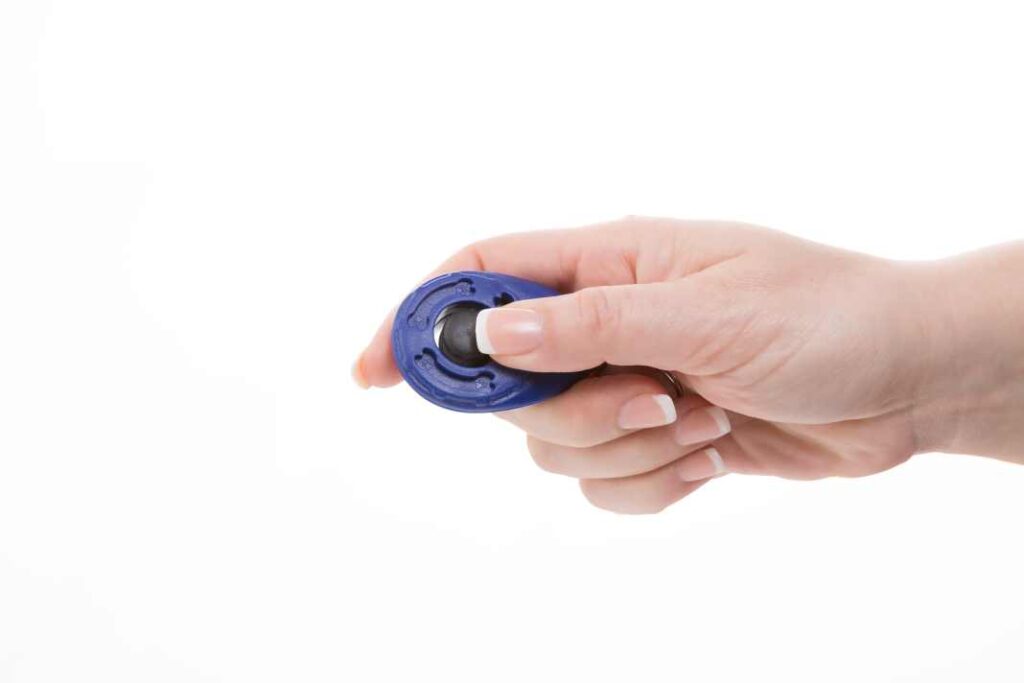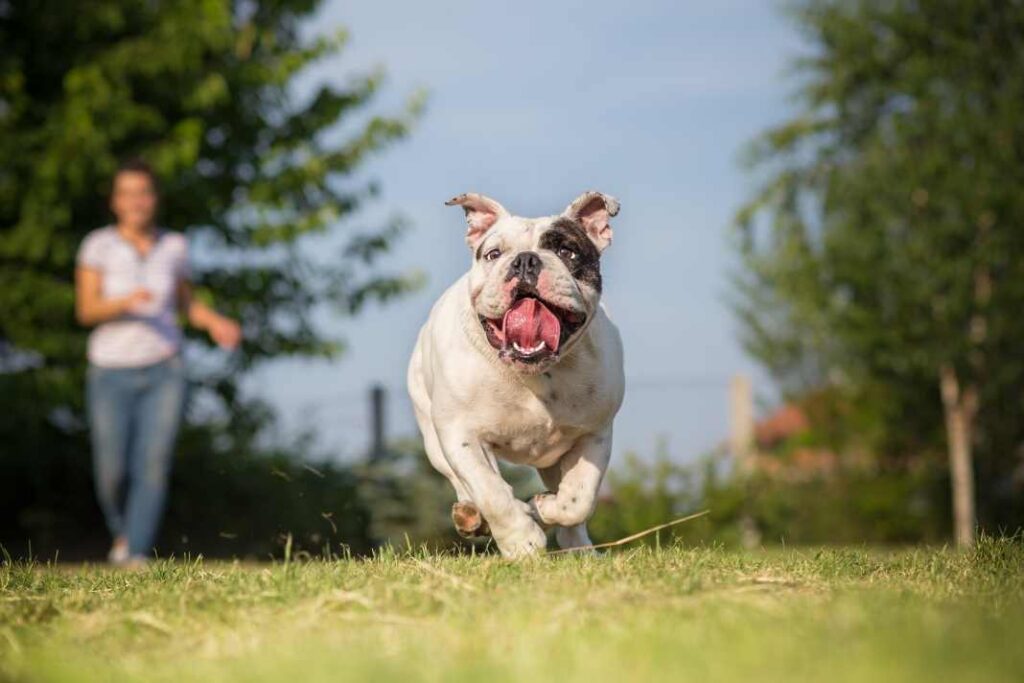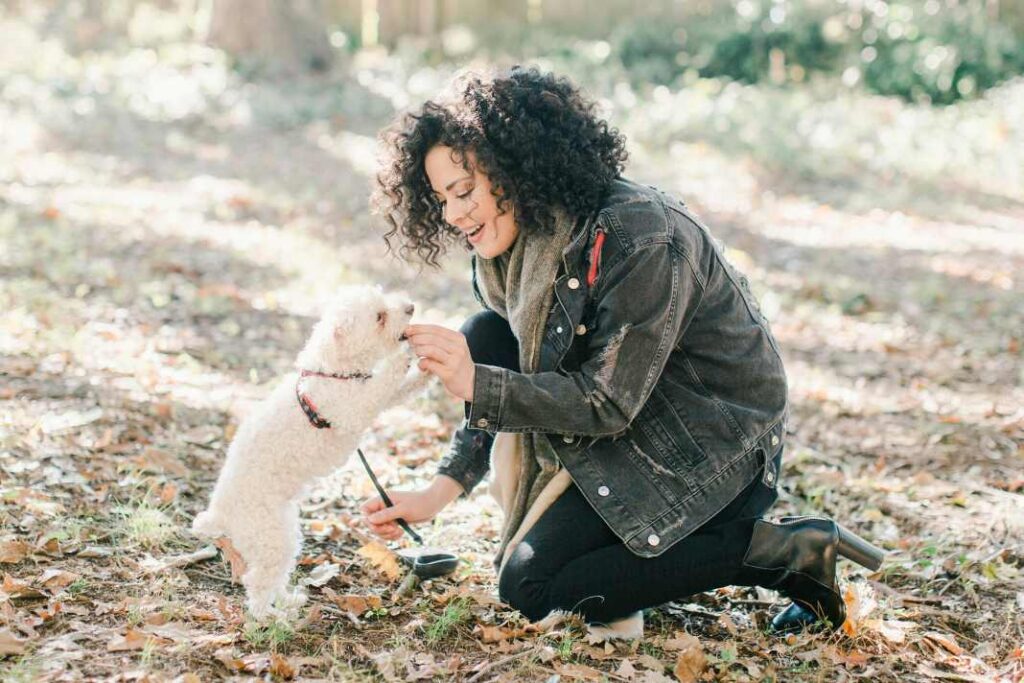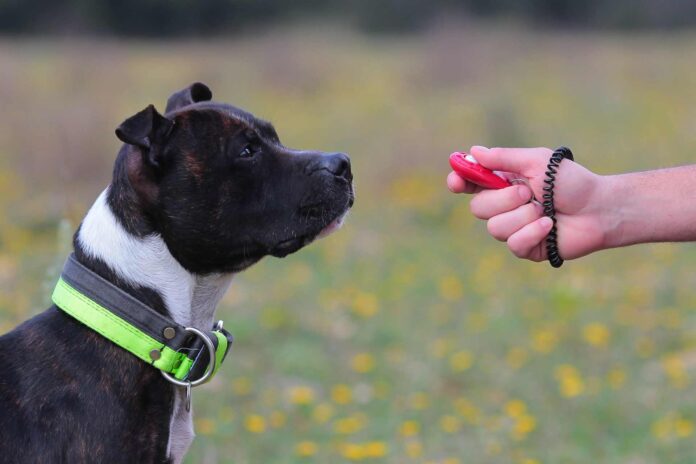To be honest with you, I never really thought much about the power of clicker training when training my dogs. But how could I? I’d never used one. Or so I thought.
I’d often remark negatively about those who walked about the dog park clicking away on their plastic gadgets. Until it was pointed out to me one day that I regularly used my tongue to make click-like sounds to reinforce my verbal commands. What was the difference?
Well, bugger me, to use a Kiwi (New Zealand) colloquial term, so I do. I don’t know how I’d get on training a dog if I didn’t!
So follow along as I cover the basics of clicker training for dogs, including the science behind its effectiveness, the benefits it offers, essential tools and techniques, tips for success, and troubleshooting challenges, as well as evaluating if it is the right training method for your dog.
Click here for Expert Videos to Stop Dog Behavioral Problems!
Introduction: The Power of Clicker Training for Dogs
Clicker training is an innovative approach to dog training that utilizes a small, handheld device known as a clicker – or as in my case a tongue. This device produces a distinct clicking sound that, when used correctly, signals to the dog that it has performed a desired behavior.
The beauty of clicker training lies in its simplicity and precision; the unique sound of the clicker cuts through the noise of everyday life, providing a clear, consistent signal that helps the dog understand exactly which action has earned it a reward. This method of training is rooted in the science of operant conditioning, leveraging positive reinforcement to encourage good behavior.
The effectiveness of clicker training extends beyond mere obedience training; it serves as a powerful tool for enhancing the communication between dogs and their owners. By marking desired behaviors with the click sound and immediately following up with a reward, dogs begin to associate the click with positive outcomes, making them more eager to learn and please.
Anecdotal evidence from the dog training community suggests that dogs trained with clickers often develop a more attentive and responsive relationship with their trainers. For instance, one dog owner reported that their pet transitioned from needing lure-based commands to responding to verbal cues in just one session, highlighting the method’s efficiency in fostering quick learning with clicker training. Such outcomes not only streamline the training process but also make it a more enjoyable and rewarding experience for both the dog and the owner, strengthening their bond through shared success and understanding in positive reinforcement dog training.

The Science Behind Clicker Training Effectiveness
Clicker training leverages the well-established principles of operant conditioning, a form of learning where an animal’s behavior is modified by its consequences; in this case, rewards follow desired behaviors. This methodology hinges on the use of a clicker, a small hand-held device that produces a distinctive sound. This sound becomes a “marker” that precisely identifies the moment a desired behavior occurs, bridging the gap between the behavior and the reward. This immediate feedback is crucial for the dog’s understanding and learning, making the clicker an invaluable tool in reinforcing positive behaviors. One notable example of its effectiveness is seen in teaching a dog to sit; the instant the dog’s hindquarters touch the ground, the click sounds, immediately followed by a reward. This clear signal helps the dog associate sitting on command with positive outcomes, thus speeding up the learning process.
Moreover, the neutrality of the click sound eliminates any variability in voice tones or emotions that could confuse the dog, ensuring a consistent and unambiguous signal each time. This consistency is key in reducing training time and enhancing the dog’s ability to learn complex behaviors and tricks. Research suggests that dogs trained with clicker training show higher engagement levels, finding the training sessions akin to a playful game. This not only improves the learning outcomes but also strengthens the bond between the dog and the trainer, making it a favored approach for both basic and advanced dog training across various breeds and ages. This method’s effectiveness is further supported by studies indicating that clicker training can also be useful in correcting unwanted behaviors, showcasing its versatility and broad applicability in dog training.
Benefits of Clicker Training for Dogs
Clicker training stands out primarily for its hands-off methodology, which allows trainers to pinpoint and reinforce desired behaviors accurately without the necessity of physical guidance. This approach is significantly beneficial as it fosters an environment of trust and respect, crucial elements in the relationship between a dog and its trainer. By eliminating physical manipulation, clicker training reduces the potential for stress and misunderstanding, making the training process not only more efficient but also more enjoyable for the dog. The clear, consistent sound of the clicker acts as an effective communication tool, signaling to the dog that it has performed the correct action, thereby speeding up the learning process.
Furthermore, clicker training transforms the learning experience into a positive and engaging activity. This aspect of clicker training is particularly compelling because it leverages the dog’s natural desires to play and receive rewards, thereby increasing their willingness to participate in training sessions. An illustrative example of this can be seen in the training of complex behaviors or tricks, where the clicker’s sound becomes a game’s “winning” signal for the dog, motivating them to repeat the behavior eagerly. This positive reinforcement strategy not only ensures a higher rate of learning and retention but also significantly deepens the emotional bond between the dog and its owner. By associating training with fun and rewards, clicker training establishes a foundation of mutual understanding and joy, enriching the relationship and making it stronger over time.

Essential Tools and Techniques for Clicker Training
To embark on a successful clicker training journey, a few essential tools alongside the clicker are indispensable. High-value treats play a crucial role in this training method, as they serve as the primary motivator for your dog. These treats should be irresistible to your dog and small enough to consume quickly during training sessions to maintain focus and momentum. In addition, a treat bag worn around the waist will ensure that rewards are always at hand, facilitating smooth and uninterrupted training sessions. Target sticks can be used to guide your dog’s movements or to teach complex behaviors by directing their attention, while training mats or blankets provide a designated ‘work’ area, helping your dog to understand when it’s time to focus on learning.
Beyond the tangible tools, the techniques and approaches used in clicker training are equally vital. Consistency in the timing of clicks and rewards helps the dog make a clear association between the desired behavior and the positive reinforcement that follows. Patience is key, as some behaviors may need to be broken down into smaller, more manageable steps to facilitate understanding and mastery. For instance, if teaching a dog to “stay,” you may first click and reward for a brief moment of stillness, gradually increasing the duration over time. This systematic approach not only accommodates dogs of all ages and learning speeds but also caters to the unique challenges and capabilities of each individual dog, making clicker training a highly adaptable and effective training method.
Getting Started with Clicker Training Basics
Embarking on the journey of clicker training with your dog starts with the fundamental step of establishing a meaningful connection between the click sound and a reward. This is crucial for setting the foundation of the entire training regimen. The process begins by choosing a high-value treat that your dog finds irresistible and pairing the sound of the click with the delivery of this treat. It is essential to ensure that the click precedes the treat, not the other way around, to firmly cement the association in your dog’s mind that the click sound predicts something good. An example of initiating this association can be as simple as clicking the device and immediately offering a treat, repeating this several times without requiring any specific behavior from your dog. This helps your dog understand that the click is always a precursor to something enjoyable.
After establishing the clicker’s significance, the next step involves identifying and marking simple behaviors or commands with the click, closely followed by a reward. This could start with basic commands like ‘sit’ or ‘stay,’ or even natural behaviors like your dog looking at you. The key is to click at the exact moment the desired behavior occurs, reinforcing the precise action you want to encourage. As your dog starts to connect the dots between the behavior, the click, and the reward, you can gradually introduce verbal cues alongside the clicking. This dual signaling not only reinforces the behavior but begins to transition your dog’s response from solely the clicker to verbal commands as well. This methodical approach ensures a smooth progression in training, making clicker training an engaging and effective way to communicate and bond with your dog.

Tips and Strategies for Successful Clicker Training
Achieving success in clicker training hinges on adopting a strategic approach that enhances the learning experience for both the dog and the trainer. To begin with, the duration and frequency of training sessions are critical elements that demand careful consideration. Short, focused sessions, ideally spanning just a few minutes each, have been proven to be highly effective. Conducting these sessions several times a day ensures that the dog remains engaged and eager to learn without becoming overstimulated or fatigued. For instance, a training session could be as brief as five minutes, focusing on a single command or behavior, thereby maximizing the dog’s attention and retention capabilities.
Moreover, the precision of timing when utilizing the clicker cannot be overstated. The click must occur at the exact moment the desired behavior is exhibited, thereby clearly communicating to the dog which action has earned them a reward. This precise timing helps in establishing a strong association between the behavior and the positive reinforcement, significantly accelerating the learning process. Conversely, it’s essential to avoid common pitfalls such as the overuse of the clicker or using it ambiguously, which can lead to confusion and hinder the dog’s understanding of the desired actions. A common example of effective timing is clicking the exact moment a dog sits on command, immediately followed by a treat. This practice reinforces the desirable behavior through clear, consistent communication.
Troubleshooting Challenges in Clicker Training
Encountering challenges during clicker training is a common part of the learning process for both the dog and the owner. If you find that your dog is not responding as expected to clicker training, it may be beneficial to consult with a professional dog trainer. These experts can offer personalized advice and strategies to address specific behavioral challenges or training hurdles that you and your dog are facing. For instance, if your dog is struggling to associate the click sound with a positive reward, a professional might suggest breaking down the training into smaller, more manageable steps or altering the timing of the click to ensure it precisely marks the desired behavior.
Another critical aspect to consider when troubleshooting clicker training is the effectiveness of your reward system. Dogs have varied preferences and what motivates one dog might not necessarily motivate another. If your dog seems disinterested or unmotivated by the treats you are using, it may be necessary to adjust the value of the rewards. Experimenting with different types of treats or even non-food rewards like toys or playtime can reignite your dog’s enthusiasm for training sessions. Remember, the goal is to make each clicker training session enjoyable and rewarding for your dog, ensuring a positive association with the training process and fostering a deeper bond between you and your pet.
Conclusion: Evaluating Clicker Training for Your Dog
Deciding if clicker training is the right approach for your dog involves a careful evaluation of your dog’s unique characteristics and preferences. Important factors to consider include your dog’s response to rewards, level of motivation during training sessions, and overall engagement with the clicker as a training tool. Some dogs might have a low food drive, making them less motivated by treats, which are often used in conjunction with the clicker to reinforce desired behaviors. In such cases, finding alternative rewards that your dog values is crucial for maintaining the effectiveness of clicker training.
Moreover, success in clicker training is not solely dependent on the dog’s characteristics; it also hinges on the owner’s commitment to consistency, patience, and the ability to maintain clear and positive communication. This training method strengthens the bond between dogs and their owners by fostering an environment of mutual trust and understanding. It’s essential to remain adaptable, as not all dogs will respond to clicker training in the same way. For some, a combination of methods might yield better results. Remember, the primary goal is to enhance the well-being and behavior of your dog through a training approach that is both enjoyable and effective for both of you.
Creating Harmony: Mastering Dog Training with Positive Reinforcement Techniques

Positive reinforcement techniques is a powerful and effective method for teaching dogs new behaviors and improving obedience.
By focusing on rewarding desired actions, trainers can create a positive and enjoyable training experience for both the dog and the owner.
Continue reading: Mastering Dog Training with Positive Reinforcement Techniques




